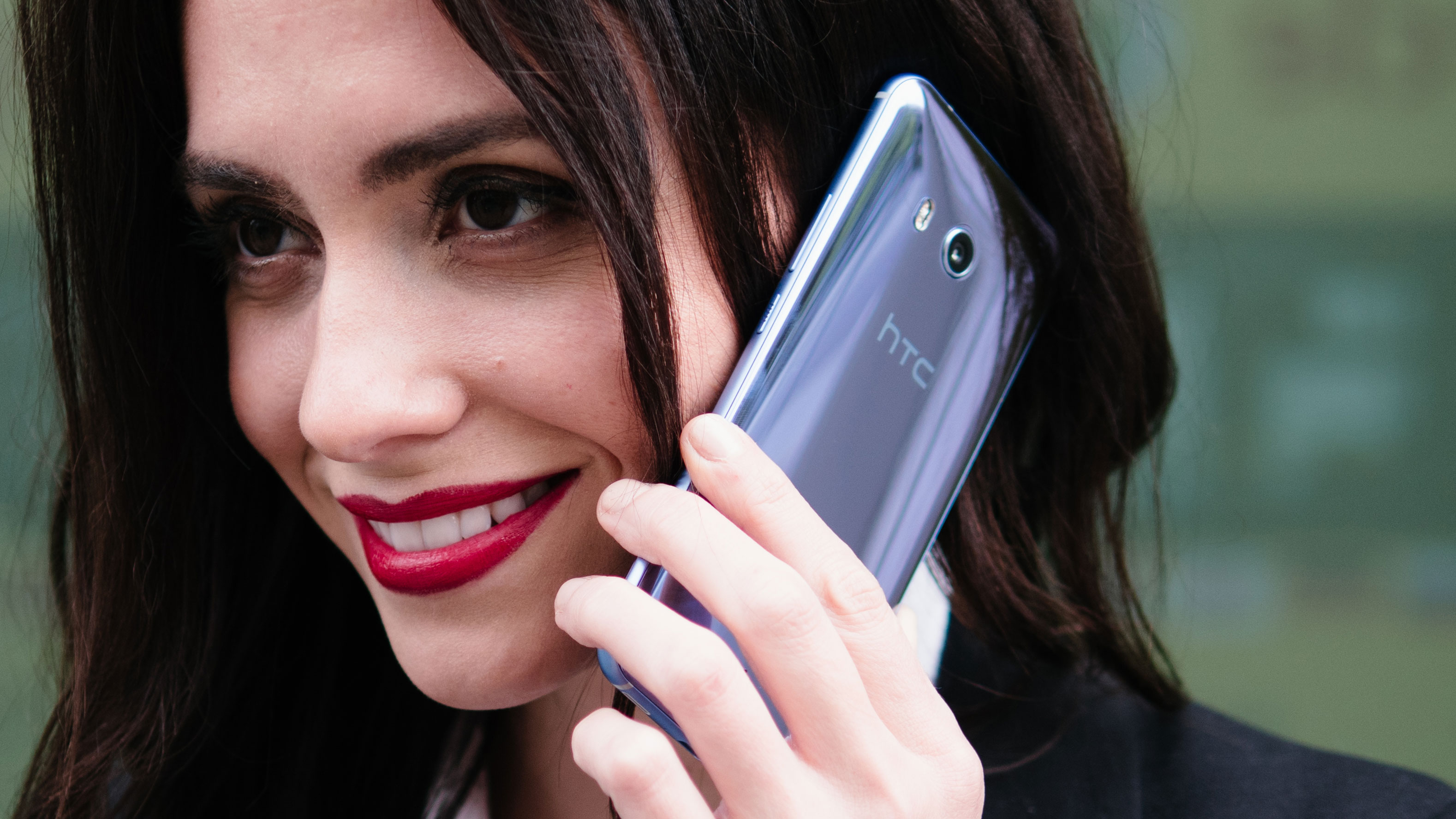HTC U11 vs Samsung Galaxy S8: which is better?
Reflecting on these glass-bodied Android phones

The HTC U11 and Samsung Galaxy S8 are the best way to tell the phones made of glass are the new 'in' thing right now.
Both glass-bodied Android Nougat smartphones just launched, and there's a lot to like about them both. But, truth be told, they're very different everywhere else.
Samsung went for the all-screen front and a bigger 5.8-inch display, while HTC opted for keeping the fingerprint sensor home button on a 5.5-inch screen and adding a app-launching squeezable frame.
Which phone is your next 12- or 24-month commitment? We've been testing out both to help you decide on the better phone.
- Read our in-depth hands on: HTC U11 review
Design
HTC U11 and Samsung Galaxy S8 kicked their aluminum and plastic forerunners to the curb for an all-glass design on the front and back and metal frames in between.

They're the best-looking (and shiniest) phones from each company, but you can definitely tell them apart. Their fronts are very different.
Samsung's 'Infinity Display' gives you a massive 5.8-inch display without making the phone dimensions too much bigger. Gone are needless bezels and the (very missable) fingerprint sensor home button.
Sign up for breaking news, reviews, opinion, top tech deals, and more.

HTC U11 doesn't follow the all-screen trend and sticks with the tried-and-true front-fingerprint sensing home button. It does have its own tricks, though.
It frame is squeezable, which – in a future update – is going to launch any app you map to this odd phone gesture.
We also liked the fact that HTC U11 has more dynamic colors available. You can get it in Solar Red (our favorite), Amazing Silver (yeah, pretty 'amazing,' but c'mon: Red!), Brilliant Black, Sapphire Blue and Ice White.
Display
Both Samsung and HTC introduced bigger displays to their loyal phone fanbase this year, and we like the maximized size in somewhat minimal dimensions.

Samsung was able to fit a 5.8-inch Quad HD+ display into a phone that's roughly the same size as last year's Galaxy S7 (it's just a bit taller). That's great engineering. It also packs in mobile HDR (though, we're waiting for HDR video content for that to even be useful).
Here's what we miss: the front physical home button with a fingerprint scanner. The sensor is on the back and off-set from the centered rear camera. Ugh.

HTC U11 gives us a 5.5-inch Quad HD screen that's larger than last year's 5.2-incher, but doesn't stretch out enough to be an all-screen phone. The trade-off is that it keeps the fingerprint scanner where it belongs, on the front.
You may notices some differences between Samsung's best-in-class Super AMOLED display and HTC's Super LCD panel. AMOLED has a history of being the best choice for VR gaming, if that matters to you.
OS and power
HTC U11 is launching after the Samsung Galaxy S8, but that means it can get the new chipset that Samsung is helping make with Qualcomm. LG G6, which didn't launch in Samsung's draft, has an older chipset.

That's great new because both these Android Nougat phones give you the latest chipsets, though Samsung uses its own even better Exynos chip outside the US.
HTC U11 wants to be the better long-term smartphone, however, and it's doing that with a choice of the normal 4GB of RAM (same as Samsung) or 6GB of RAM. This raises the ceiling for multitasking and having more apps open at once.
Both are going to be plenty powerful, and it can be argued that you really don't need 6GB of RAM on a phone right now. Android's software limitations are the bigger issue to going full-power. But it's a nice future-proofing perk 24 months from now.
Battery and camera
Samsung is playing it safe with a 3,000mAh battery size, given all of the Galaxy Note 7 fires and recalls. It still has really excellent battery life, especially when using battery-saving tricks like switching to a Full HD resolution.

HTC U11 goes for the same conservative battery life size of 3,000mAh. We feel as if both phones could have squeezed bigger batteries into their tight frames, but we're still expecting all-day battery life with normal use.
You're definitely not getting identical camera specs from these two phones.
The Galaxy S8 has an excellent 12MP sensor on the back with a f/1.7 aperture. It takes excellent photos, and does a good job in low-light too. The 8MP front-facing camera is Samsung's real camera upgrade for 2017, and the company's camera app remains among the best.
The HTC U11 also shoots with a 12MP sensor and f/1.7 aperture as its main rear-facing camera, but like the Samsung phone, its highlight is that front-facing camera with an impressive 16MP. It's a major upgrade for long-time HTC users.
Takeaway
Both Samsung and HTC are launching brand new designs for their smartphones and they're really shaping up to be among the best phones of 2017.

Samsung delivered a lot with its first all-screen phone, but HTC is trying to promise you more in every other non-display category with more RAM and more pixel-dense selfie photos.
We have some more testing to do before we determine what we think of the HTC U11, but its a glass phone that rivals the Galaxy S8 in a lot of ways, and we're intrigued by the forthcoming squeezable frame that's supposed to launch apps. It's the strangest gesture shortcut we've seen in a while, and worth checking out.
